Traveling through TSA and airport security is easy, as airport and government employees are trained to accommodate both service dogs and pet dogs. Emotional support animals don’t have the same rights as service dogs when traveling, so they’ll be considered pets. However, the security and checkpoint process is virtually the same. The main difference is you and your dog’s rights as a passenger, like being allowed out of a carrier on the plane, and the pet fees the airline charges.
This post walks you through the steps so you don’t have to feel anxious. Then, we go into more detail about what to expect and say at each step, from check-in to security and the boarding gate. Click any of the links in the bullet list below to go directly to the section so you can access the information most important to you.
The process of getting through airport security with a service dog is:
- Fill out and have your DOT form ready at baggage check or check-in
- Go to TSA security and inform them you have a service dog
- Pass through the metal detector, like any other passenger
- Walk directly to the boarding gate and let the agent know you’ll need extra time to settle in
There is nothing to feel stressed about. Dog owners like you pass through airport security with no issues every single day. Use the links above or keep reading to find travel tips from service dog and pet parents like you, which we’ve experienced firsthand.
Click here to find information specific to airport security and service dogs, and click here to find information about airport security with pet and ESA dogs.
Going Through Security with a Service Dog
You probably already know that service dogs can board flights free of charge. The process is simple as long as you plan and understand what to expect. Here’s what you should know:
Before getting to the airport
- All service dog handlers must complete this DOT service dog form. Make sure you have submitted it to your airline ahead of time.
- You don’t need any other documents or accessories for your service dog, but most owners identify their dog with a vest, special tag, or card.
- Some psychiatric service dog handlers also like to have a copy of their PSD letter handy for additional peace of mind.
When you arrive at the security line
- Inform the TSA agent that you are traveling with a service dog.
- You’ll need to remove all metal from your dog (like the collar).
- Items that are needed to control the service dog or indicate that the service dog is on duty don’t need to be removed.
Going through security
- You and your dog will walk through the metal detector instead of the AIT body scanner.
- You can also carry your service dog if it is small enough.
- If the metal detector goes off, you and your service dog will undergo additional screening, including a pat-down.
- TSA will not separate you from your service dog at any point.
- The TSA officer may swab your hands for explosive residue after you go through the metal detector.
After passing security
- Once at the boarding gate, you can ask the gate agents for pre-boarding so you can settle in with your service dog.
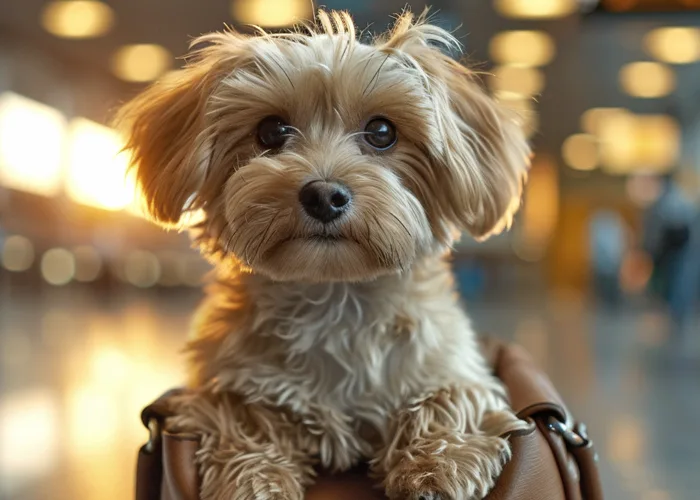
Going Through Security with a Non-Service Dog
Before getting to the airport
- Before your trip, confirm the airline’s policies regarding pets and make sure they have cleared your pet for boarding.
- Most airlines will only accept smaller dogs and charge a fee for bringing one on board.
When you arrive at the security line
- Use a hand-held travel carrier for your pet.
- Remove your pet from the carrier before the screening process starts.
- Place the empty travel carrier on the conveyor belt for X-ray screening.
Going through security
- You can either carry your pet or walk them on a leash through the metal detector.
- TSA officers might swab your hands for explosive residue.
- After screening, move to a re-composure area to safely return your pet to the carrier.
Going through airport security with a dog is usually a breeze. TSA officers are generally well-trained in accommodating service dogs and pets.
If you ever have any concerns about how you or your service dog or pet are being treated, remember that you can always ask to speak with a supervisor or passenger support specialist. All owners and their dogs are entitled to feel safe and comfortable during the security process.
Need a PSD letter from a licensed therapist?
See if you have a qualifying disorder for a PSD in 3 easy steps.
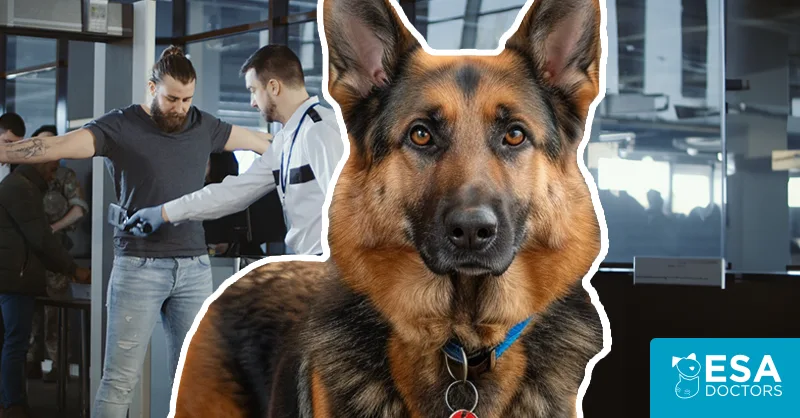


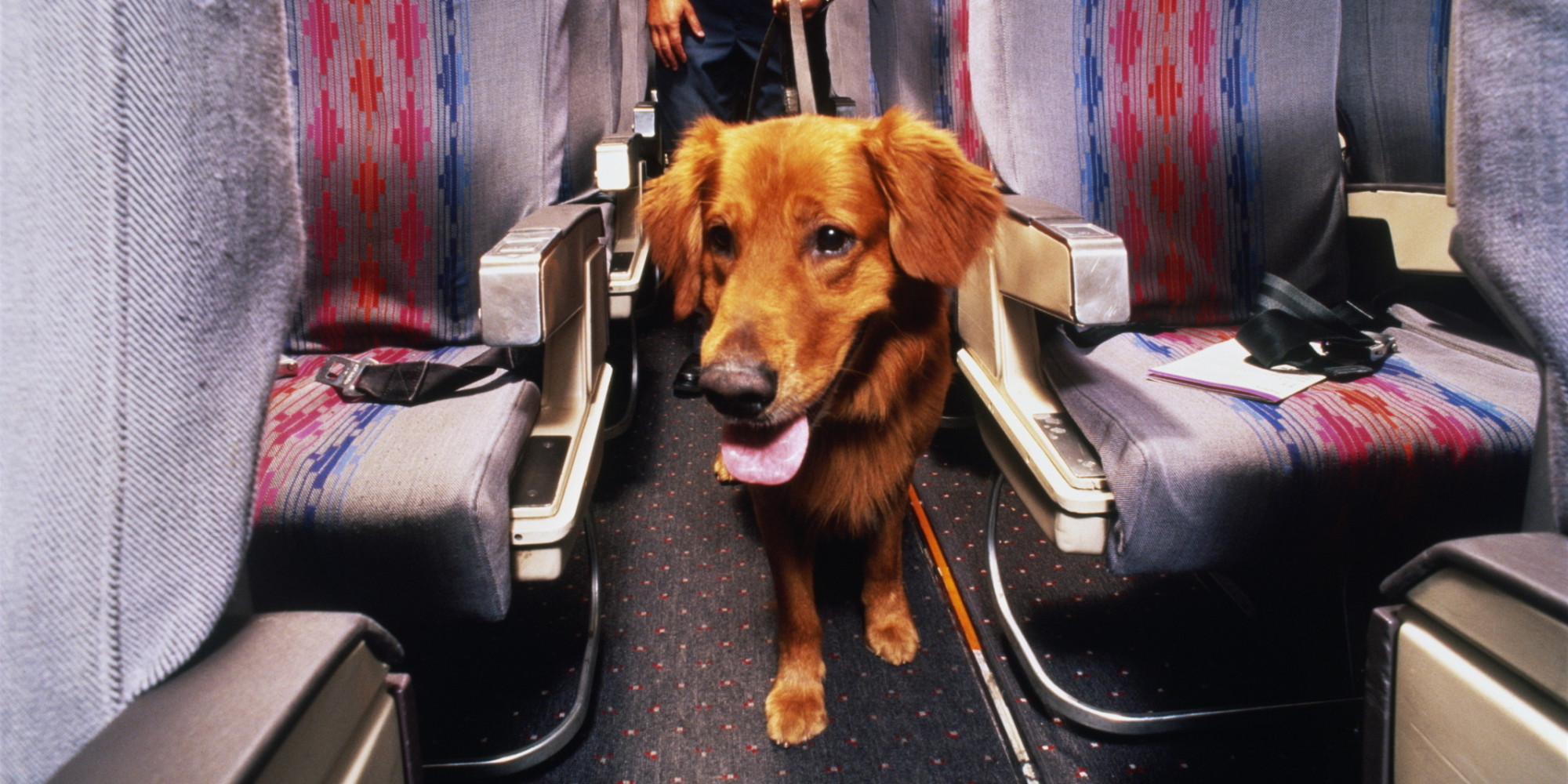
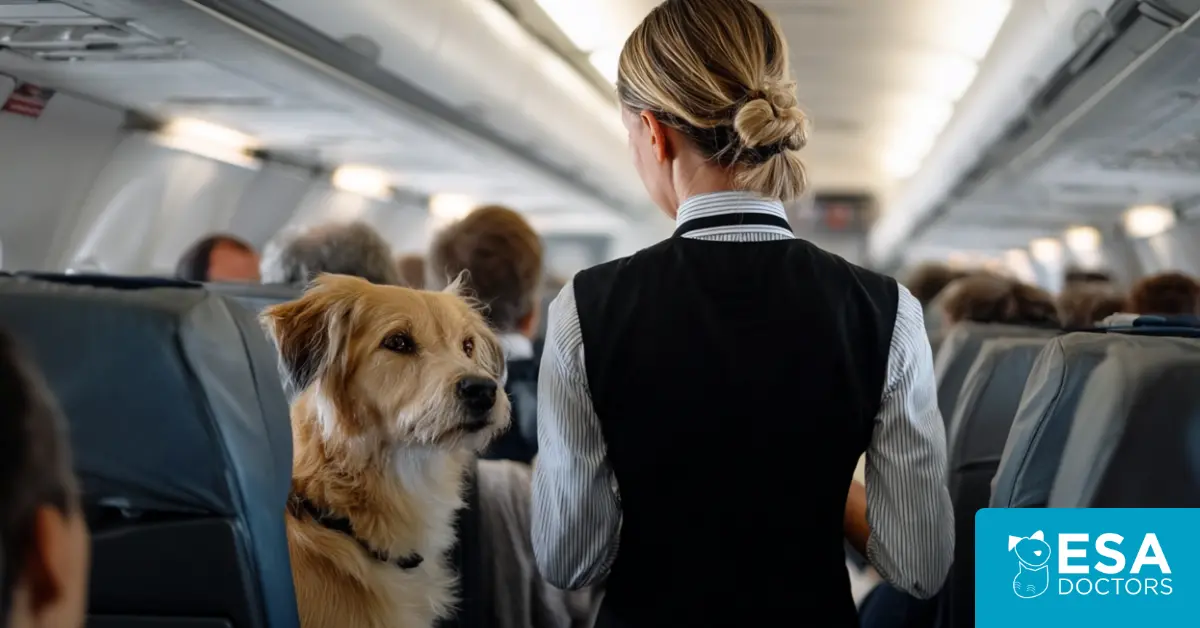
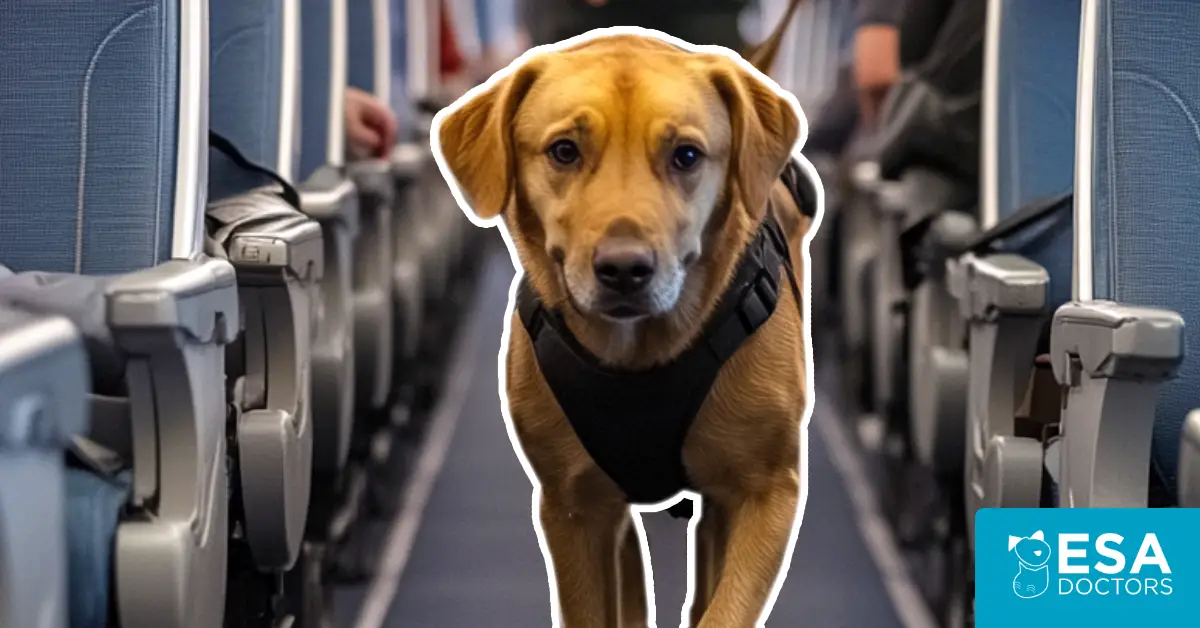
Leave a Comment